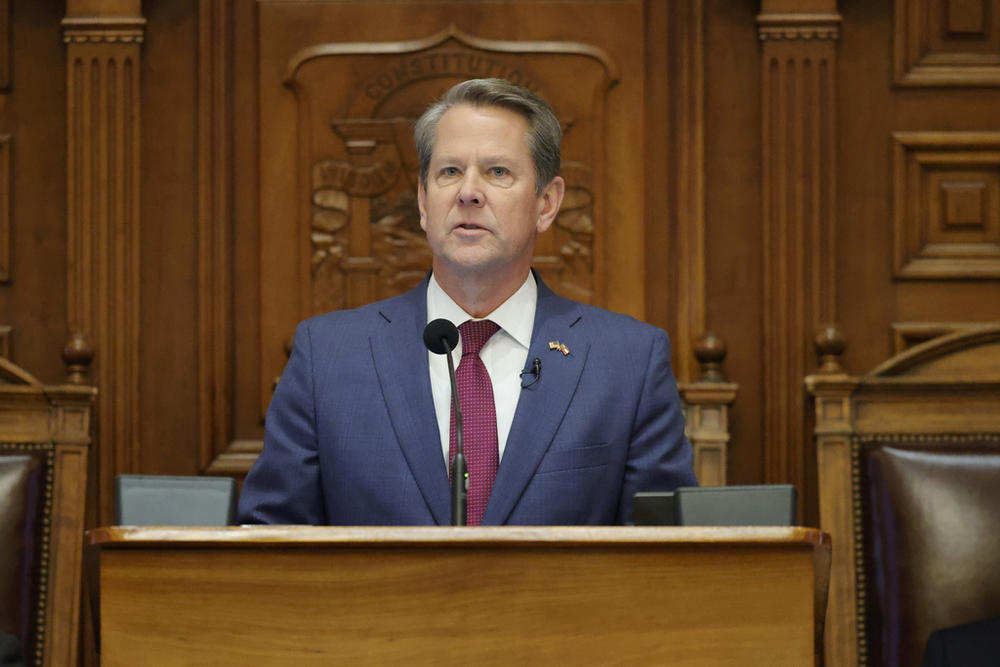
Caption
Georgia Gov. Brian Kemp delivers the State of the State address on the House floor of the state Capitol, Jan. 25, 2023, in Atlanta. The Republican Kemp announced final tax collections for 2023 on Wednesday, July 12, indicating the state will run a roughly $5 billion surplus for the budget year just ended.
Credit: AP Photo/Alex Slitz, File

